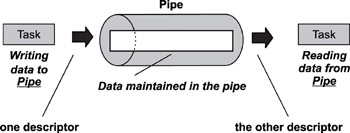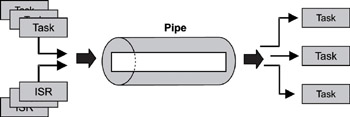
Master the fundamental concepts of real-time embedded system programming and jumpstart your embedded projects with effective design and implementation practices. This book bridges the gap between higher abstract modeling concepts and the lower-level programming aspects of embedded systems development. You gain a solid understanding of real-time embedded systems with detailed practical examples and industry wisdom on key concepts, design processes, and the available tools and methods.
Delve into the details of real-time programming so you can develop a working knowledge of the common design patterns and program structures of real-time operating systems (RTOS). The objects and services that are a part of most RTOS kernels are described and real-time system design is explored in detail. You learn how to decompose an application into units and how to combine these units with other objects and services to create standard building blocks. A rich set of ready-to-use, embedded design “building blocks” is also supplied to accelerate your development efforts and increase your productivity.
Experienced developers new to embedded systems and engineering or computer science students will both appreciate the careful balance between theory, illustrations, and practical discussions. Hard-won insights and experiences shed new light on application development, common design problems, and solutions in the embedded space. Technical managers active in software design reviews of real-time embedded systems will find this a valuable reference to the design and implementation phases.
Qing Li is a senior architect at Wind River Systems, Inc., and the lead architect of the company’s embedded IPv6 products. Qing holds four patents pending in the embedded kernel and networking protocol design areas. His 12+ years in engineering include expertise as a principal engineer designing and developing protocol stacks and embedded applications for the telecommunications and networks arena. Qing was one of a four-member Silicon Valley startup that designed and developed proprietary algorithms and applications for embedded biometric devices in the security industry.
Caroline Yao has more than 15 years of high tech experience ranging from development, project and product management, product marketing, business development, and strategic alliances. She is co-inventor of a pending patent and recently served as the director of partner solutions for Wind River Systems, Inc.
About the Authors
8.2 Pipes
Pipes are kernel objects that provide unstructured data exchange and facilitate synchronization among tasks. In a traditional implementation, a pipe is a unidirectional data exchange facility, as shown in Figure 8.1. Two descriptors, one for each end of the pipe (one end for reading and one for writing), are returned when the pipe is created. Data is written via one descriptor and read via the other. The data remains in the pipe as an unstructured byte stream. Data is read from the pipe in FIFO order.
Figure 8.1: A common pipe-unidirectional.
A pipe provides a simple data flow facility so that the reader becomes blocked when the pipe is empty, and the writer becomes blocked when the pipe is full. Typically, a pipe is used to exchange data between a data-producing task and a data-consuming task, as shown in Figure 8.2. It is also permissible to have several writers for the pipe with multiple readers on it.
Figure 8.2: Common pipe operation.
Note that a pipe is conceptually similar to a message queue but with significant differences. For example, unlike a message queue, a pipe does not store multiple messages. Instead, the data that it stores is not structured, but consists of a stream of bytes. Also, the data in a pipe cannot be prioritized; the data flow is strictly first-in, first-out FIFO. Finally, as is described below, pipes support the powerful select operation, and message queues do not.






